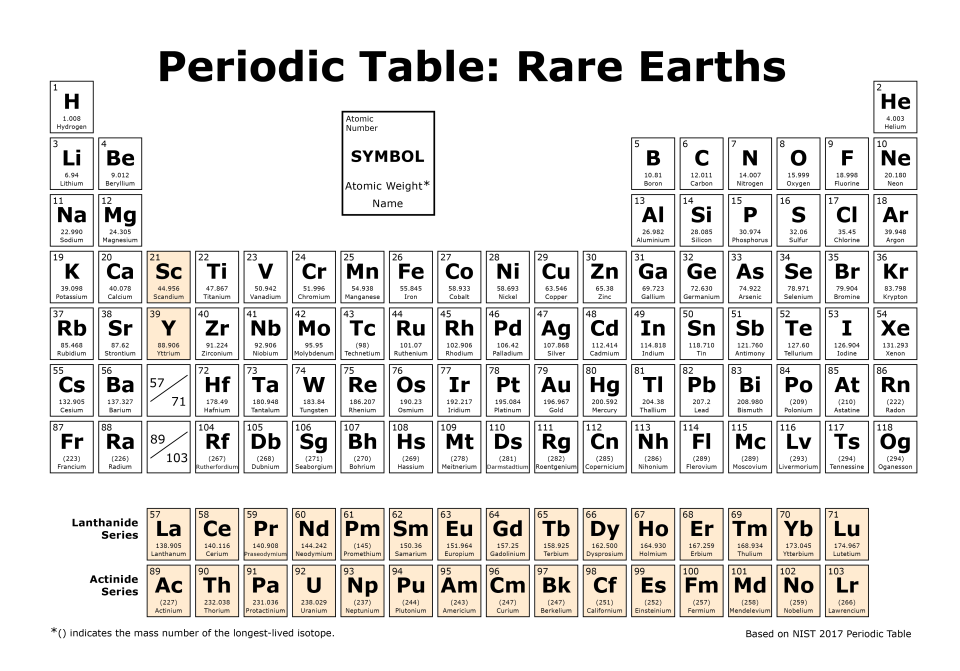TENORM: Rare Earths Mining Wastes
Rare earth elements, known as lanthanides on the periodic table, include 15 chemical elements with atomic numbers 57 through 71. Yttrium (atomic number 39) and scandium (atomic number 21) are also included because they have similar chemical properties as the lanthanide series. Rare earth elements have high electrical conductivity and are often used in defense and in modern electronics, such as cell phones and magnets. Their importance and vulnerability to supply chain disruptions has led to the designation of all the rare earth elements as “critical minerals” by the USGS.
Rare earth minerals are processed primarily from ores and minerals that also naturally contain uranium and thorium. Processing rare earth minerals involves the separation and removal of uranium and thorium, which results in TENORM wastes.
For detailed information and publications about rare earths, including statistics about domestic and international mining and use, see the U.S. Geological Survey Rare Earth Minerals Information page.
Learn about Technologically Enhanced Naturally Occurring Radioactive Material (TENORM) sources and EPA’s role.

